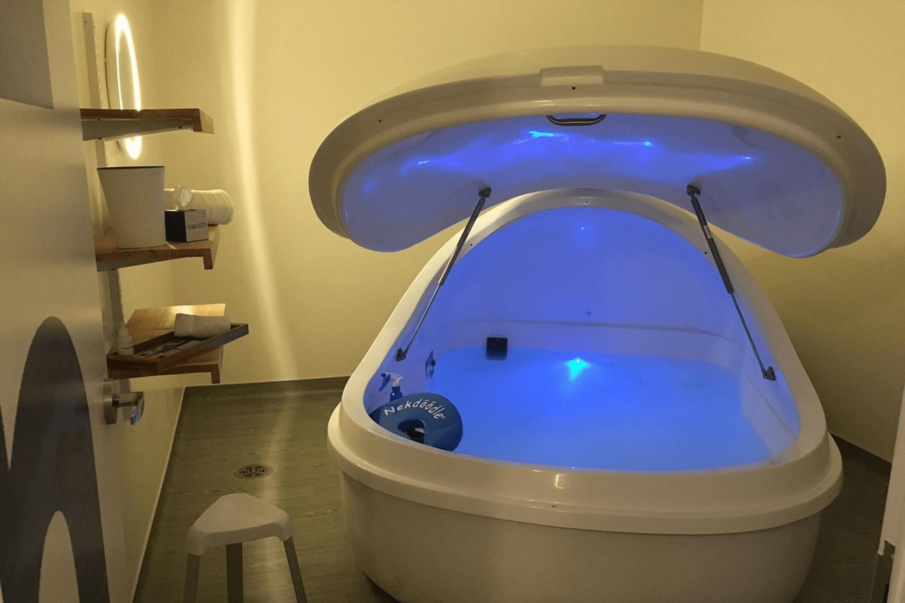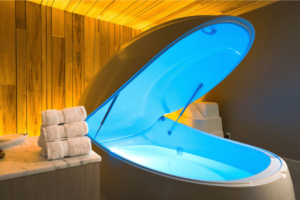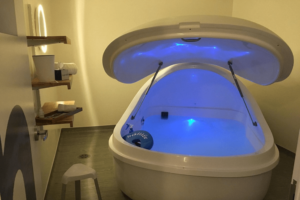Everyday life can feel overwhelming. Many professionals in the United States juggle constant emails, deadlines, and endless meetings. For business owners and marketing managers, having a clear mind and strong creativity is not only important for personal health but also for business growth. One approach that more people are now exploring is float therapy.
Also called sensory deprivation float therapy, floating is more than a wellness trend. It is a proven method that helps the body relax and gives the brain a chance to recharge. Let’s look at how it can sharpen mental clarity and encourage creativity.
What is Float Therapy?
Float therapy is a simple practice where you lie in a tank or pod filled with warm water mixed with Epsom salts. The high salt level makes you float effortlessly. The tank is quiet and usually dark, creating a state called sensory deprivation float therapy.
Inside this setting, your body feels weightless, your muscles release tension, and your mind gets a break from constant outside noise. Many people compare it to pressing the reset button on both body and mind.
Float Therapy and Mental Clarity
Clearing Mental Fog with Float Therapy
Modern work often pushes people to multitask. While it feels productive, it usually creates confusion and mental clutter. Float therapy cuts out all the usual distractions. Without phones, sounds, or screens, the brain can focus better. Many people leave their sessions feeling calmer and more organized in their thoughts.
Stress Relief for Clear Thinking
Stress is one of the main reasons for poor concentration. High stress hormones slow down the brain and cloud decision-making. Regular float therapy sessions help reduce these hormones and activate the part of the nervous system that promotes calmness. This makes thinking clearer and sharper.
Float Therapy and Creativity
Why Creativity Needs Stillness
Great ideas often appear when the mind has room to wander. Constant digital alerts and workplace pressure block this natural process. Float therapy for relaxation provides the stillness the brain needs. In this relaxed state, the brain’s creativity center becomes more active, leading to new ideas and solutions.
Float Therapy as a Space for New Ideas
Professionals often describe float tanks as their personal idea space. Writers, designers, and business owners say they come out with fresh concepts, marketing campaigns, or new ways to solve ongoing challenges. By removing distractions, sensory deprivation float therapy gives space for creativity to flow.
Science Behind Float Therapy Sessions
Many studies support the benefits of float therapy sessions. Floating helps reduce stress, improves mood, and supports better sleep. It also changes brainwave activity, encouraging deep relaxation and creativity. According to the National Library of Medicine, floating has shown positive results in lowering anxiety and improving overall well-being, which directly helps with focus and productivity.
Float Therapy for Professionals in the United States
For small and medium-sized businesses, B2B companies, and local business owners, staying innovative is essential. Float therapy can play a useful role here.
Marketing managers can use it to clear their heads and plan campaigns. Business owners may find it easier to create growth strategies. E-commerce leaders often use floating to refresh their minds and approach business with new energy. For many professionals, sensory deprivation float therapy has become part of their personal growth and workplace success.
Float Therapy for Relaxation Outside Work
The advantages of floating are not limited to business. Float therapy for relaxation also improves sleep, reduces muscle tension, and supports emotional balance. Better rest and a calmer mindset help leaders perform better both at work and at home.
How Often Should You Try Float Therapy Sessions?
The number of times you float depends on your needs. For general stress relief, many people book a session once or twice a month. For creativity boosts, weekly sessions can be useful, especially during big projects. Some business owners prefer floating every few weeks to reset and stay balanced.
Conclusion
In today’s business world, professionals need tools that support focus, creativity, and balance. Float therapy sessions give the mind a chance to rest and recover, helping people think more clearly and approach problems with fresh ideas.
If you are interested in trying sensory deprivation float therapy, Secret Soak Society is a trusted platform that offers professional guidance. Their expertise makes the experience more rewarding, especially for first-time users.
Floating is not only about relaxation. It is about improving clarity, creativity, and overall well-being, which can make a real difference in both business and daily life.
FAQs on Float Therapy
How long does a float therapy session last?
Most float therapy sessions last between one and one and a half hours, though some centers offer shorter or longer options.
Is float therapy safe?
Yes, sensory deprivation float therapy is safe for most people. If you have certain medical conditions, it is best to check with a doctor first.
Will I feel claustrophobic in the tank?
Float tanks are usually spacious, and you can keep the lid open if that makes you more comfortable. Most people relax quickly once they begin floating.
Can float therapy improve sleep?
Yes, floating helps the body relax, reduces stress hormones, and supports natural sleep cycles. Many people report sleeping better after their sessions.
Where can I find float therapy sessions in the United States?
Float centers are now available in many cities. Searching online for float therapy near me can help you find local options.





